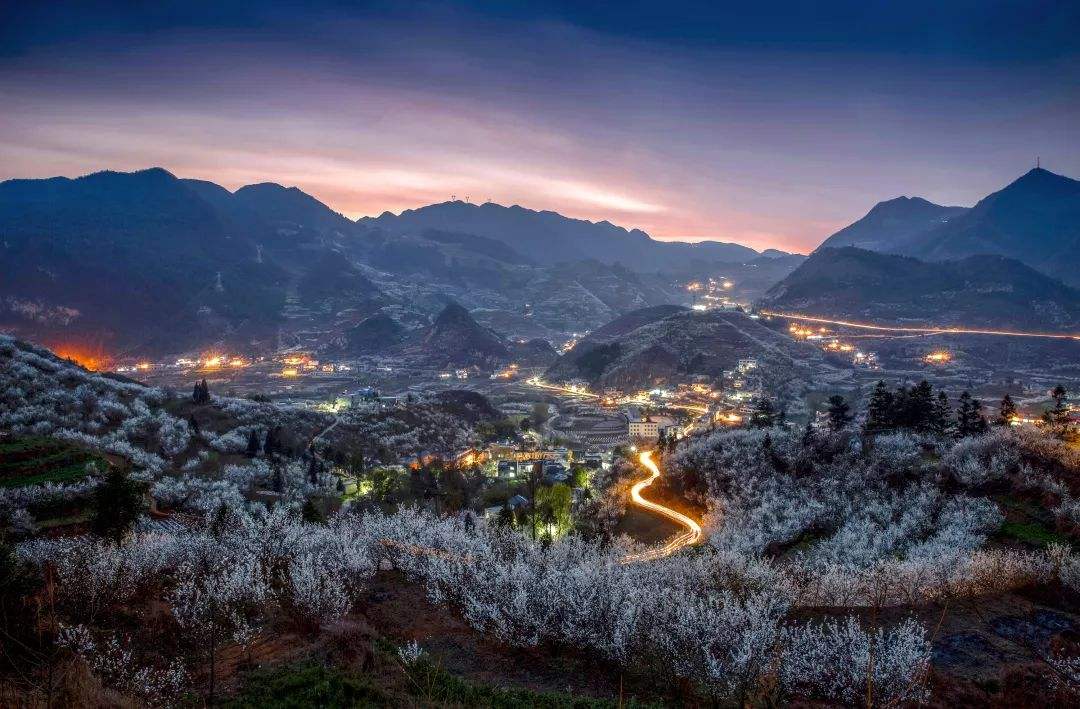- Profile Jurisdictions GOV DEPARTMENTS Cultures Travelling Educate
-
Hengzhang County is located in the northwest of Guizhou Province and the west of Bijie City. It is a designated poverty alleviation county by the Central United Front Department, the Central Committee of the Taiwan Democratic League, and Panyu District of Guangzhou City. The total area of the county is 3,242 square kilometers, with 1.3275 million mu of cultivated land, 2.514 million mu of forest land, 30 townships (streets) and 481 administrative villages (communities). The total population is 897,000, with 614,600 permanent residents. The highest altitude is 2,900.6 meters, the lowest altitude is 1,230 meters, and the average altitude is 1,996 meters. The county is characterized by overlapping peaks and continuous mountains for hundreds of miles, with crisscrossing gullies and deep rivers. It belongs to a typical karst rocky mountain area and is known as "the hometown of the Yelang • the peak of Qian Mountains".

Firstly, it has a special political status. The only national pilot zone with the theme of "developing poverty alleviation and ecological construction" was established in Bijie, which was initiated by Comrade Xi Zhongxuan and personally advocated by Comrade Hu Jintao, and approved by the State Council. In June 1985, reporter Liu Zifu of Xinhua News Agency reported the poverty situation of Haizhuang Village, Hetian Township, Hexian County in the internal reference "Domestic Dynamic Clearing", and Comrade Xi Zhongxuan, then member of the Central Political Bureau and Secretary of the Central Secretariat, made an important instruction. In July of the same year, Comrade Hu Jintao, then Secretary of the Party Committee of Guizhou Province, inspected and investigated Hexian County and personally advocated the establishment of the Bijie Pilot Zone with the theme of "developing poverty alleviation and ecological construction", which was approved and established by the State Council in June 1988. Since the 18th National Congress of the Communist Party of China, General Secretary Xi Jinping has been concerned about the development of the pilot zone and the people of the pilot zone, 1 time personally inspected and guided, 2 times major policy support, 3 times important instructions and instructions, and many times cared for and guided by speeches, which has injected strong impetus into the reform and development of Hexian.

Second, it has a profound historical and cultural heritage. Since the Neolithic Age, Hexi has been inhabited by humans. During the Warring States Period, it was under the jurisdiction of Yelang, and it is well known to the world for the question "Who is bigger, Yelang or Han?" According to historical records, the Kole Township (transliterated from the Yi language "Korolo洛姆", meaning "Central Great City") under its jurisdiction was once the political, economic, and cultural center of the Yelang ancient kingdom during its peak period. From the 1950s to the present, more than 3,000 cultural relics from the Warring States Period to the Qin and Han Dynasties have been unearthed, accounting for more than two-thirds of the cultural relics unearthed in the province during the same period. Among the graves that have been excavated, the unique "head-in-head" burial is the first of its kind in China and is a unique burial practice of the Yelang nation. In 2001, the Kole site was rated as one of the "Top Ten Archaeological Discoveries of the Year 2001" and enjoys the reputation of "the Holy Land of Archaeological Excavations in Guizhou and the Yelang Bronze Culture's Yin Ruins". Hexi is where the Red Second and Sixth Corps fought, and it is one of the main battlefields of the famous Wumeng Mountain Encounter Battle, leaving behind more than a dozen red revolutionary sites such as the Jiangnan Soviet Regime, the Zhehe River Battle Site, the Zhezhuangba Battle Site, and the Yimaqiang Conference Site.

The third is the colorful ethnic culture. There are 12 ethnic townships and 134 ethnic minority administrative villages in the county, where Han, Yi, Miao, Bai, Buyi, Hui and other 31 ethnic groups live, with an ethnic minority population of 195,500, accounting for 21.96%. The county retains complete ethnic minority cultural heritage such as writing, language, clothing, and folk customs. It is one of the counties and districts with the richest Yi script classics and cliff carvings. There are 100 ancient Yi script steles in the county, and the number of ancient Yi script books preserved by the public ranks in the forefront of Yi areas in various provinces. The "Bell Dance" of the Yi nationality and the "Great Migration Dance" of the Miao nationality were included in the second batch of national intangible cultural heritage list and the first batch of provincial representative works of intangible cultural heritage, respectively. Eight projects such as "Yi Sutaiji", "Miao Song Shirt", and "Lusheng Music" were selected into the sixth batch of provincial representative works of intangible cultural heritage in Guizhou Province.

Fourth, it is rich in mineral resources. Hexiang is located in the core area of the "Bishui Xing Energy and Mineral Resources Rich Area", with coal, iron, lead, zinc and 25 other metal and non-metallic minerals hidden within its territory. Among them, coal resources have a storage capacity of 5.748 billion tons, with 3.123 billion tons of proven reserves, accounting for 4% of the province's reserves; iron ore resources have a storage capacity of 1.08 billion tons, with 654 million tons of proven reserves, accounting for more than 50% of the province's proven resource reserves; lead and zinc mine resources have a storage capacity of 45.5173 million tons, with a metal storage capacity of 5.0934 million tons, ranking first in the province; wind power has a developable resource volume of 1.97 million kilowatts, accounting for 11.8% of the city's total, and photovoltaic has a developable resource volume of 1.51 million kilowatts, accounting for 12.9% of the city's total, ranking second in the city, known as the "treasure house" of the Wumeng Mountains.
Fifth, the ecological environment is good. The land of Hexi is evergreen, the air is always fresh, the water is always clear, and the soil is always clean. The forest coverage rate is 60.24%, the excellent days of environmental air quality account for 99.7% of the year, and the wild leek flower belt of Jiexianping is known as the "Hometown of Wild Leek in China - Polystachys". It is a beautiful color belt of Yunnan Guizhou; Xiaojie Xiangping is known as one of the "Top Ten Cool Mountains in China" for three consecutive years, and it is a dreamlike "stone forest bonsai" of the roof of Guizhou; The vast and beautiful Axi West Grassland is a continuous green on the land of Yelang; Jiugou Water Hot Spring Resort has excellent water quality and is the most scaled and characteristic health and leisure resort in northwest Guizhou. The unique geographical and climatic environment has nurtured thin-shelled and fragrant walnuts, sweet cherries, delicate-tasting cola pork, and medicinal and edible Tianma, etc. It enjoys the reputation of "Hometown of Walnuts in China", "Hometown of Cherries in China", "Hometown of Pinellia in China", and "Hometown of Tianma in China".
Sixth, the travel conditions are convenient. Hexi is one of the transportation hubs in Bijie, with the Bihui Expressway and the G326 National Road running through it from east to west, and the Zhenshui Expressway and the S212 Provincial Road connecting the north and the south. The Hexi Expressway, which is about to be completed, extends from southwest to northeast, and the three-level road network of the county, township, and village connects in all directions and runs through the fields. Through the multi-level layout of "expressway skeleton + national and provincial roads + rural road network", a three-dimensional transportation system covering urban and rural areas has been built, significantly improving the travel conditions of the people in the whole county, narrowing the time and space distance between Hexi and Qixingguan, Weining, Nanyong, Liangshan, Zhenxiong and other places, and building a new development pattern of "one-hour economic circle" with the surrounding counties and districts, and it is more convenient to go to the economic circles such as the Yangtze River Delta, the Pearl River Delta, the Chengdu-Chongqing, and the Yunnan-Zhong.
contact details
Tel:00-86-
Address:No.1005 Xiaokang 1st Road, Shuanghe Street, Hezhang County, Guizhou Province, China
Working hours:Weekdays from 8:30-12:00 am; 2:00-5:30 pm
